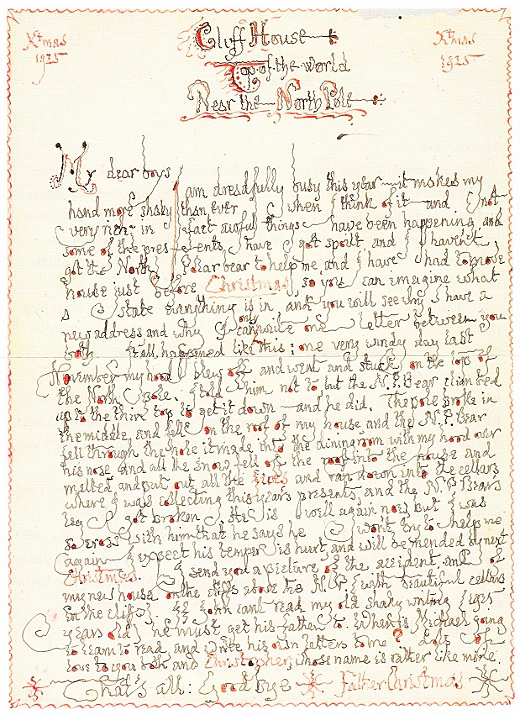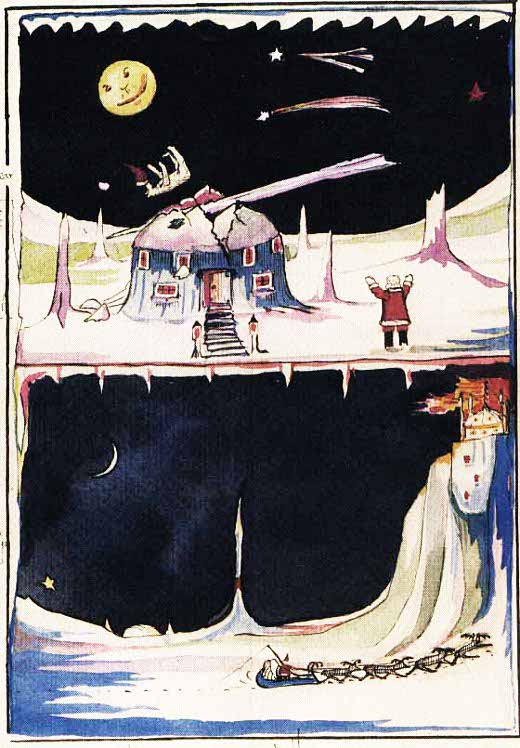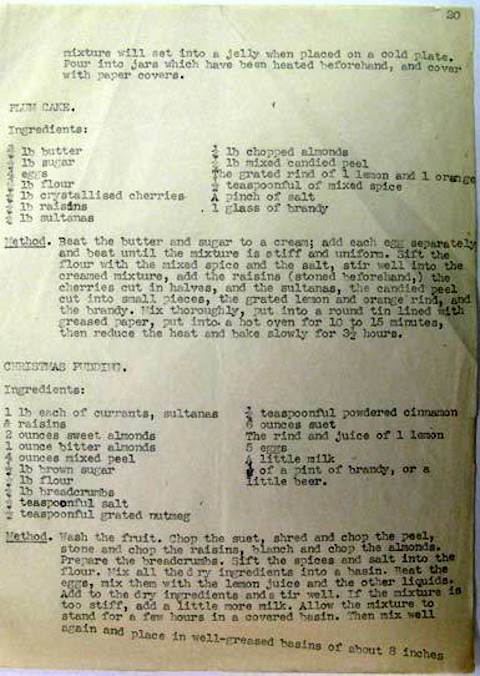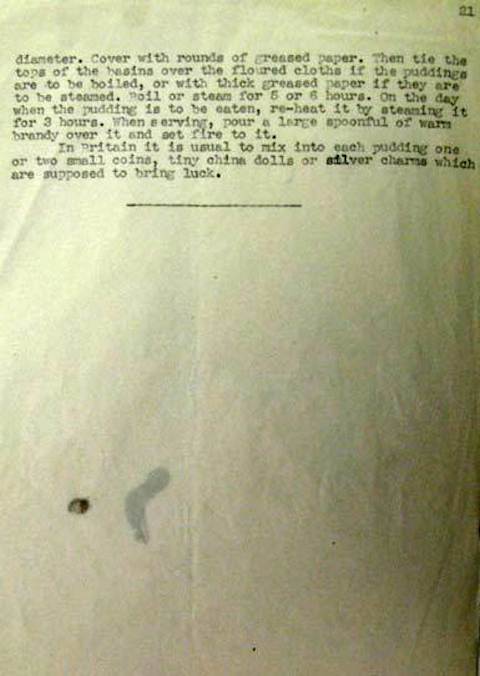J.R.R. Tolkien is best known for the sweeping fantasy landscapes of Lord of The Rings and The Hobbit. Apart from being a celebrated author, the Oxford University professor of Anglo-Saxon was also a devoted father who doted on his children.
In 1920, a few short years after Tolkien returned from World War I, he began an endearing family Christmas tradition that would continue for the next 23 years. After the birth of his firstborn son, John, Tolkien began to write his four children letters from Father Christmas. These North Poles tales chiefly concern Father Christmas’ struggles against the north’s bat-riding goblins, as well as the mischievous hijinks of his helper, North Polar Bear. An adept illustrator whose original drawings accompanied many of his writings (see his book cover designs for Lord of the Rings), Tolkien included with many of his Christmas letters a set of charming pictures.
The many letters were eventually collected in a beautiful volume called Letters From Father Christmas. Thanks to the good work of Letters of Note, we bring to you a sample letter from 1925:
Cliff House
Top of the World
Near the North Pole
Xmas 1925
My dear boys,
I am dreadfully busy this year — it makes my hand more shaky than ever when I think of it — and not very rich. In fact, awful things have been happening, and some of the presents have got spoilt and I haven’t got the North Polar Bear to help me and I have had to move house just before Christmas, so you can imagine what a state everything is in, and you will see why I have a new address, and why I can only write one letter between you both. It all happened like this: one very windy day last November my hood blew off and went and stuck on the top of the North Pole. I told him not to, but the N.P.Bear climbed up to the thin top to get it down — and he did. The pole broke in the middle and fell on the roof of my house, and the N.P.Bear fell through the hole it made into the dining room with my hood over his nose, and all the snow fell off the roof into the house and melted and put out all the fires and ran down into the cellars where I was collecting this year’s presents, and the N.P.Bear’s leg got broken. He is well again now, but I was so cross with him that he says he won’t try to help me again. I expect his temper is hurt, and will be mended by next Christmas. I send you a picture of the accident, and of my new house on the cliffs above the N.P. (with beautiful cellars in the cliffs). If John can’t read my old shaky writing (1925 years old) he must get his father to. When is Michael going to learn to read, and write his own letters to me? Lots of love to you both and Christopher, whose name is rather like mine.
That’s all. Goodbye.
Father Christmas
via The Paris Review
Related Content:
Listen to J.R.R. Tolkien Read a Lengthy Excerpt from The Hobbit (1952)
C.S. Lewis’ Prescient 1937 Review of The Hobbit by J.R.R. Tolkien: It “May Well Prove a Classic”
Download Eight Free Lectures on The Hobbit by “The Tolkien Professor,” Corey Olsen
Discover J.R.R. Tolkien’s Personal Book Cover Designs for The Lord of the Rings Trilogy
Ilia Blinderman is a Montreal-based culture and science writer. Follow him at @iliablinderman.










